Convictions Bar Wisconsinites From Many Jobs, Making Re-entry 'A Real Struggle'
People of color in Wisconsin have higher incarceration rates than whites, which means many jobs and opportunities remain out of reach for them.
Wisconsin Watch
June 3, 2021 • South Central Region
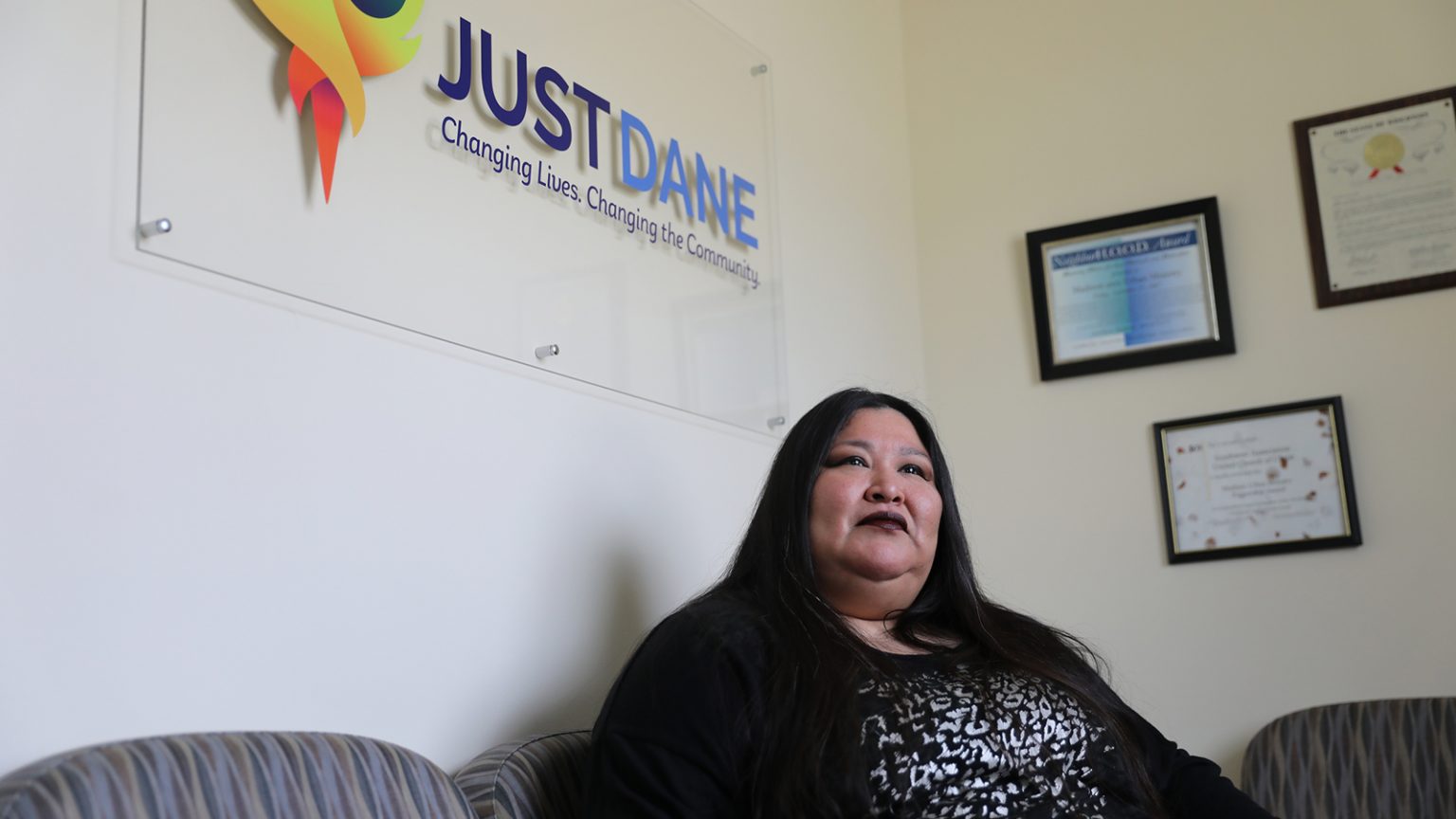
Janie Ocejo is a program specialist and bilingual reentry resource specialist at JustDane in Madison. Photographed April 27, 2021 at the JustDane office. (Credit: Coburn Dukehart / Wisconsin Watch)

By Sonya Chechik and Kirien Sprecher, Wisconsin Watch
After graduating from the University of Wisconsin-Madison, Janie Ocejo put her social work education and bilingual, bicultural background to work by supporting Madison’s Hispanic folks through positions at various community organizations.
But a series of bad decisions landed Ocejo in prison. While there, she expected to find work once she was released. After all, she had a college education, work experience, strong interview skills and had even previously been on hiring teams.
However, rebuilding her life proved to be much more difficult than she expected, and it took months for Ocejo to land a job. She applied for anything, even positions she was significantly overqualified for, and sought services and connections from organizations where she had once worked.
Because of her criminal background, no one would hire her.
“Doors were closed because of the stigma,” she said.
Today, Ocejo has found a new cause, prompted by her struggle after two years in prison to re-establish a career and a life outside the bars. She now works for Madison-based JustDane, which helps individuals and families impacted by incarceration.
While Ocejo found success, many incarcerated people are less fortunate, finding themselves locked in a cycle of incarceration, unemployment and poverty.
In 2018, one-fourth of the 5 million formerly incarcerated people in the United States were unemployed — five times more than the general population, according to the Prison Policy Initiative (PPI), a nonprofit that studies and proposes solutions to America’s mass incarceration problem.
This high rate is not due to lack of trying — 93% of formerly incarcerated people between the ages of 25 and 44 were actively looking for jobs compared to 83.8% of the same age range in the general population, the same report found.
And since Wisconsin and the U.S. disproportionately incarcerate people of color — with the disparity most pronounced among African Americans — the long-lasting stigma of having a criminal record disproportionately burdens them as well. In Wisconsin, roughly 6% of the population is Black but makes up about 38% of people who are incarcerated in the jails, state prisons and federal correctional institutions in the state, a product, many experts believe, of disproportionate policing of Black people.
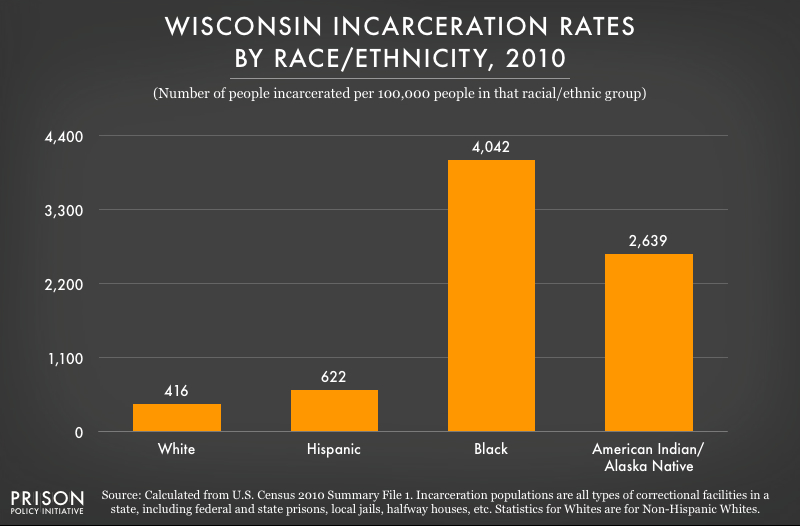
Calculated from 2010 U.S. Census data. Incarceration populations are for all types of correctional facilities, including federal and state prisons, local jails and halfway houses. Statistics for whites are for non-Hispanic whites. (Credit: Prison Policy Initiative)
“There’s … that social contract that says if you violate, this here is your punishment. Once that punishment is concluded then you have the opportunity to reclaim citizenship, your life. And that’s not the reality,” said James Morgan, a formerly incarcerated person who works with Ocejo at JustDane.
Advocates say more funding for pre- and post-release services and efforts to counter the stigma attached to having a criminal record could boost the odds that people will succeed after serving their sentences.
Reforming resources for re-entry
Wisconsin invests far more to lock up residents than it does to help them succeed outside of prison. The state spends $1.35 billion a year on housing to incarcerate approximately 24,000 people but just $30 million on training and re-entry programs for people who have been released from prison — two-thirds of which is allocated for housing programs. That’s a huge problem, said state Rep. Shelia Stubbs, D-Madison.
“We’re incarcerating people much faster than we are reintegrating them back into our community,” said Stubbs, a former probation and parole officer. “We spend way too much money incarcerating people, and not enough money coming back out into our communities, to help our loved ones. These are our brothers, sisters, neighbors, friends in our community.”
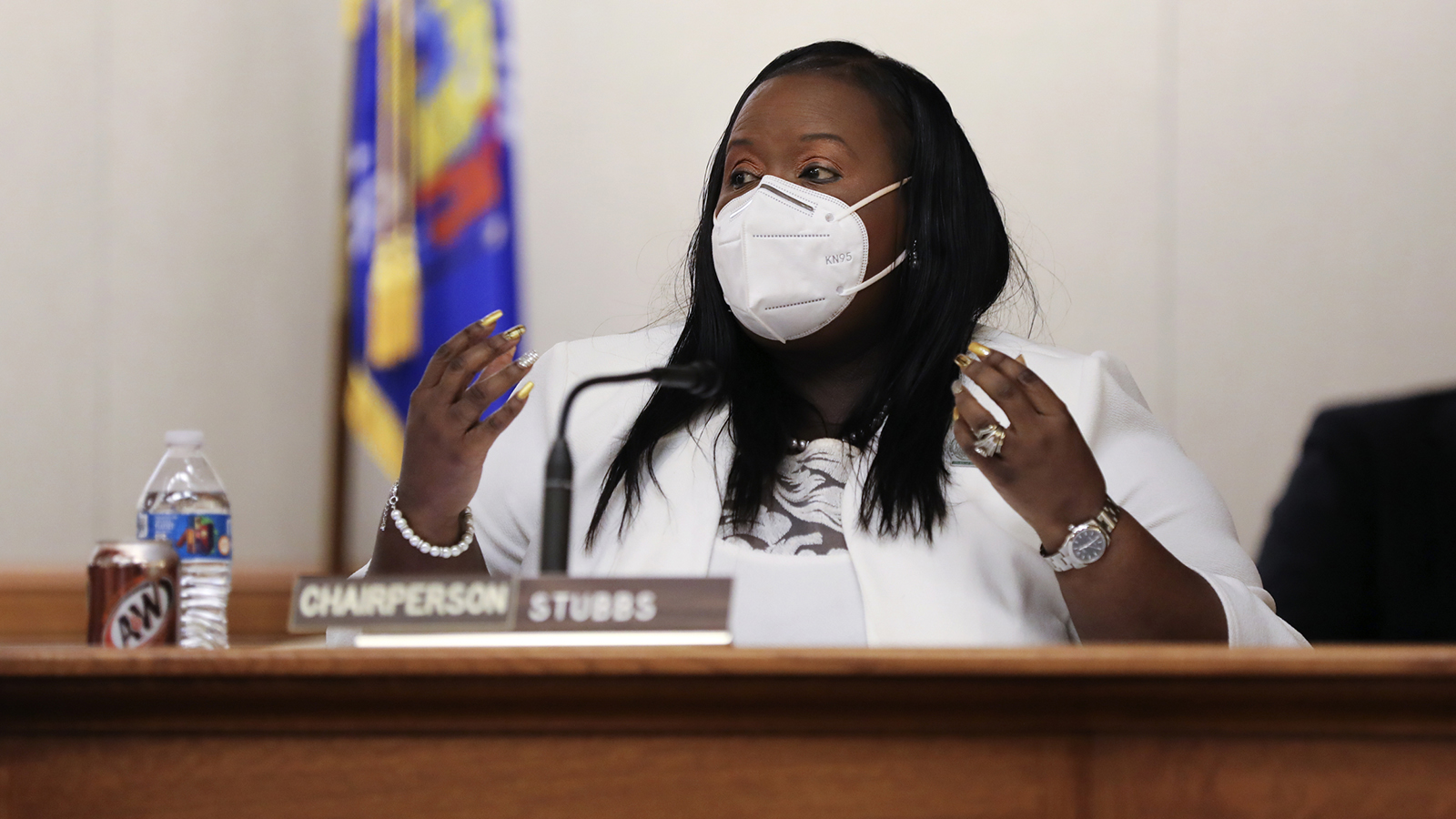
Rep. Shelia Stubbs, D-Madison, co-chairs the Speaker’s Task Force on Racial Disparities. She is seen at a public hearing held by the task force at the Wisconsin State Capitol on April 8, 2021. Stubbs, a former probation and parole officer, says Wisconsin spends too much money on locking up people and not enough on helping them succeed after incarceration. (Credit: Coburn Dukehart / Wisconsin Watch)
The United States provides only the “bare minimum” when it comes to services and training accessible to people during and after their incarceration, said Lucius Couloute, an assistant professor at Suffolk University whose research focuses on mass incarceration and its impacts. Improving this is crucial to helping the formerly incarcerated rejoin society, he said.
Wisconsin’s Department of Corrections offers a variety of programming to those who are currently incarcerated including work-release programs, job training and education, according to DOC spokesman John Beard. However, the COVID-19 pandemic temporarily cancelled a few of these opportunities.
Work-release programs offer incarcerated individuals a chance at making a living wage throughout their sentence and can help cover income taxes, child support or restitution owed to victims, or save money for after they’re released, according to the DOC. Prison and jail fees alone can cost hundreds or thousands of dollars.
But nationally, the majority of incarcerated individuals are stuck working jobs within their facilities — in maintenance or food service — earning less than $1 an hour.
Only 6% of incarcerated individuals nationwide work in correctional industries, state-owned businesses that typically produce goods sold to government agencies. An even fewer find jobs through work release, according to a report by PPI.
Because of her circumstances, Ocejo was ineligible for work release — and the $9 to $13 pay rate it could provide. Instead, she started out earning 26 cents an hour working in the prison kitchen.
Throughout her incarceration, Ocejo worked her way up to the top rate of $1.60 an hour, driving a forklift for Badger State Industries, Wisconsin’s correctional industry.
Ocejo said she was grateful for the pay, the skills she learned and a chance to feel like she was back in a workplace. But a job outside of prison would have allowed her to earn enough to avoid the anxiety of her long job search — including the prospects of lacking health insurance — following her release.
Still, “(Badger State Industries) gave me a chance to feel like I was doing something to help myself and a sense of purpose with some income coming in that otherwise I would not have received,” she said.
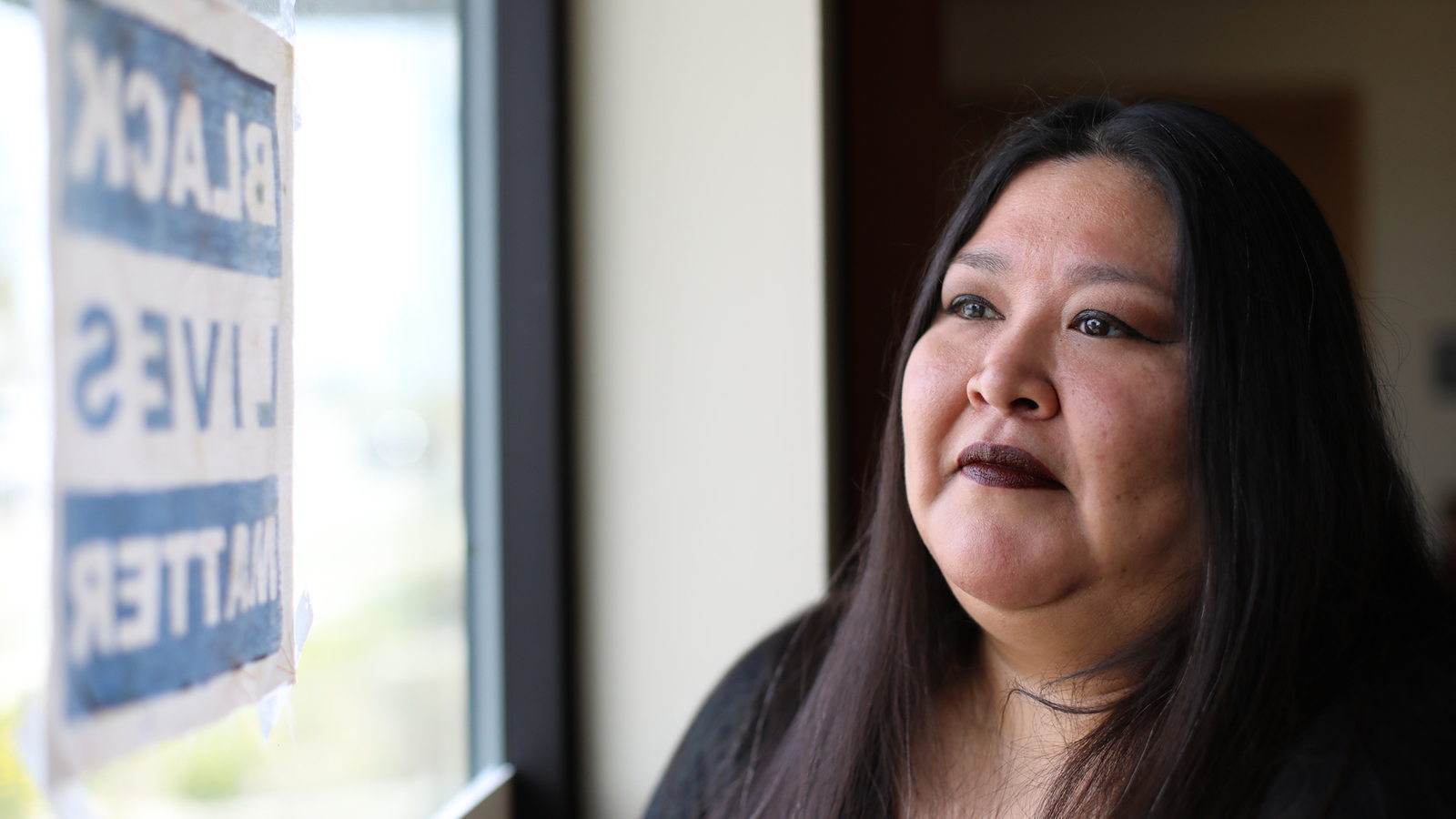
Janie Ocejo is a program specialist and bilingual reentry resource specialist at JustDane in Madison. Ocejo spent two years in prison and struggled to find work after her release, despite a background in social work and knowledge of community resources and services. She was hired at JustDane specifically because of her background — her resume and criminal record — so she could put her lived experience to work helping others. Photographed April 27, 2021 at the JustDane office. (Credit: Coburn Dukehart / Wisconsin Watch)
Wisconsin’s Department of Workforce Development is another vital resource for people who seek personal advancement — like a job or higher education — while incarcerated, according to Ray Woodruff, an assistant administrator at the DOC. It provides assistance to state and local agencies for improving job training, placement and retention services for offenders.
“There is a lot of focus right now on providing funding to train individuals who are incarcerated to re-enter the workforce, and as an agency, we are constantly looking at opportunities to access those funds,” Woodruff said.
Despite these stated goals, the Division of Community Corrections slightly shrunk allocations for employment, community service and vocational programs from 2017 to 2020, according to the agency’s yearly reports.
DOC services include a re-entry assessment, meeting with a social worker, information about how to apply for Medicaid pre-release and transitional housing, Beard said.
“Our long-term goals are obviously to ensure that the thousands and thousands of individuals that (are) release(d) from incarceration every year have meaningful opportunities in the community,” Woodruff said.
Despite her relatively short incarceration, social work background and knowledge of community resources and services, Ocejo still struggled with re-entry. She had some savings from her work in prison and qualified for FoodShare but couldn’t initially find a job or a way to access mental health services and fill needed prescriptions.
“Here I am being resourceful. I know where to go, I know what to do, and I couldn’t get anything,” she said. “I did everything I was supposed to do (upon re-entry), but a lot of it is having organizations that know how to help you and being there when you need them.”
Stigma lingers after sentence ends
Melissa Ludin, a regional organizer for the Wisconsin ACLU’s Smart Justice Project, said employment, housing and access to services are often in short supply for the formerly incarcerated.
“Just for having a felony conviction, discriminates you from many different things, and people don’t feel the impact of what that felony does until you get released and you realize how you are discriminated against,” Ludin said.
Ludin said it is important to distinguish between the experience of Black and Hispanic women versus men. While fewer women face incarceration, they often bear bigger burdens in and outside of prison.
Formerly incarcerated Black women face the highest rate of unemployment (43.6%), compared to Black men (35.2%) and white men (18.4%), according to PPI. It says the criminal justice system is poorly designed to meet the needs of women, who often must support children, care for families and deal with past trauma and substance abuse.
Criminal records often barrier
Wisconsin law bars discrimination against a person because of a criminal record — unless the crime is “substantially related” to the job. In addition, a “ban-the-box measure” passed in Wisconsin in 2016 prevents government employers from asking about criminal records on their initial application for civil-service positions to reduce discrimination.
But such bans do not keep employers from easy access to criminal records through publicly available sources such as the Wisconsin Circuit Court Access Program (CCAP), said Linda Ketchum, executive director of JustDane.
“CCAP makes it really easy for people to do anonymous checks on people and make decisions you will never be able to prove,” Ketchum said.
And some research indicates that cities that implement ban the box have higher levels of discrimination against Black job applicants.
“What happens is that employers are using race as a proxy for criminality,” Couloute said, adding that such policies need to curb such discrimination.
Colleen Rogers, director of human resources at Madison Kipp Corp., said the manufacturer offers employment to currently and previously incarcerated people — part of its social responsibility to reduce barriers to re-entry.
“Employers need to put their biases aside, if that’s their problem, and give these folks an opportunity … adults make mistakes,” Rogers said. “They make bad decisions maybe when they’re younger, and why not give them opportunity to live?”
Certain jobs off-limits
Additionally, people who have committed crimes face greater restrictions in licensing or employment within specific industries, even if their crime is unrelated to the job they would perform.
Ocejo encountered this while pursuing work in caregiving. State law requires a background check for caregivers, jobs involving vulnerable populations.
“This can knock out many individuals with a record, even if you never had your crime connected to your previous jobs, like me,” she said.
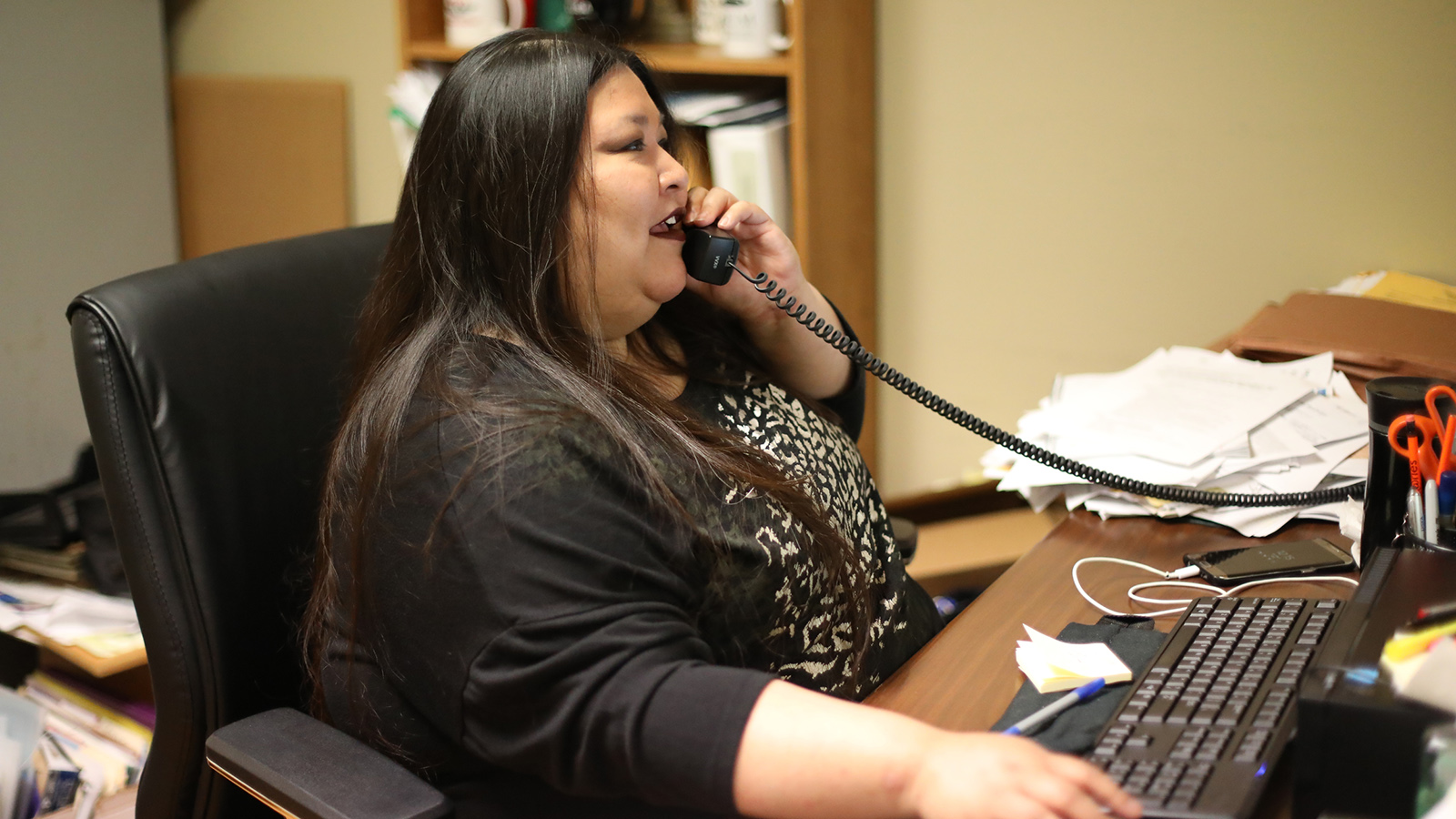
Janie Ocejo is a program specialist and bilingual reentry resource specialist at JustDane in Madison (Credit: Coburn Dukehart / Wisconsin Watch)
While Ocejo committed crimes — of fraud and forgery — she emphasized that she “never used or misused my positions to leverage to commit a crime.” Still, it was especially difficult for her to find positions similar to what she had before her incarceration because many nonprofits in Wisconsin follow the so-called caregiver law.
But Kipp Corp. sees hiring currently and previously incarcerated people as a win-win situation — giving people skills and an opportunity to gain income and work experience while helping fulfill Kipp’s needs as a busy manufacturer, Rogers said.
The pandemic forced Kipp to suspend its employment program for currently incarcerated people, but Rogers said she hopes it will resume soon.
“They’re our employees. We don’t care where they came from. I need your skills and we’re going to invest in you,” she said.
People with criminal records likely recognize that they’re in a fragile position in the labor market and — when they are given a second chance — they work extra hard to prove their worth, Couloute said. Research from Johns Hopkins bears this out, finding that such employees actually perform better than people who had not been incarcerated.
Rogers has seen this counter narrative play out in real time as Kipp benefits from the skillsets people acquired prior to going to prison and their motivation to work.
“They’re great employees. They want to work,” she said.
Ocejo ultimately landed a job at a nonprofit where she and her future employer had an honest conversation about her criminal history.
“She saw my potential,” Ocejo said. “They gave me the chance to excel in an area that I had skills in … and give me the confidence and trust I needed.”
She has since switched employers, and now works with JustDane, which hired her because of her background so she could put her lived experience to work as the bilingual resource specialist and peer support program coordinator.
JustDane also runs the Just Bakery program, a 12-week training program for people facing employment barriers ranging from homelessness and criminal conviction history to a lack of education, and who want to pursue a career in baking or culinary arts. JustDane by March 2022 aims to launch a similar training program for hospitality management.
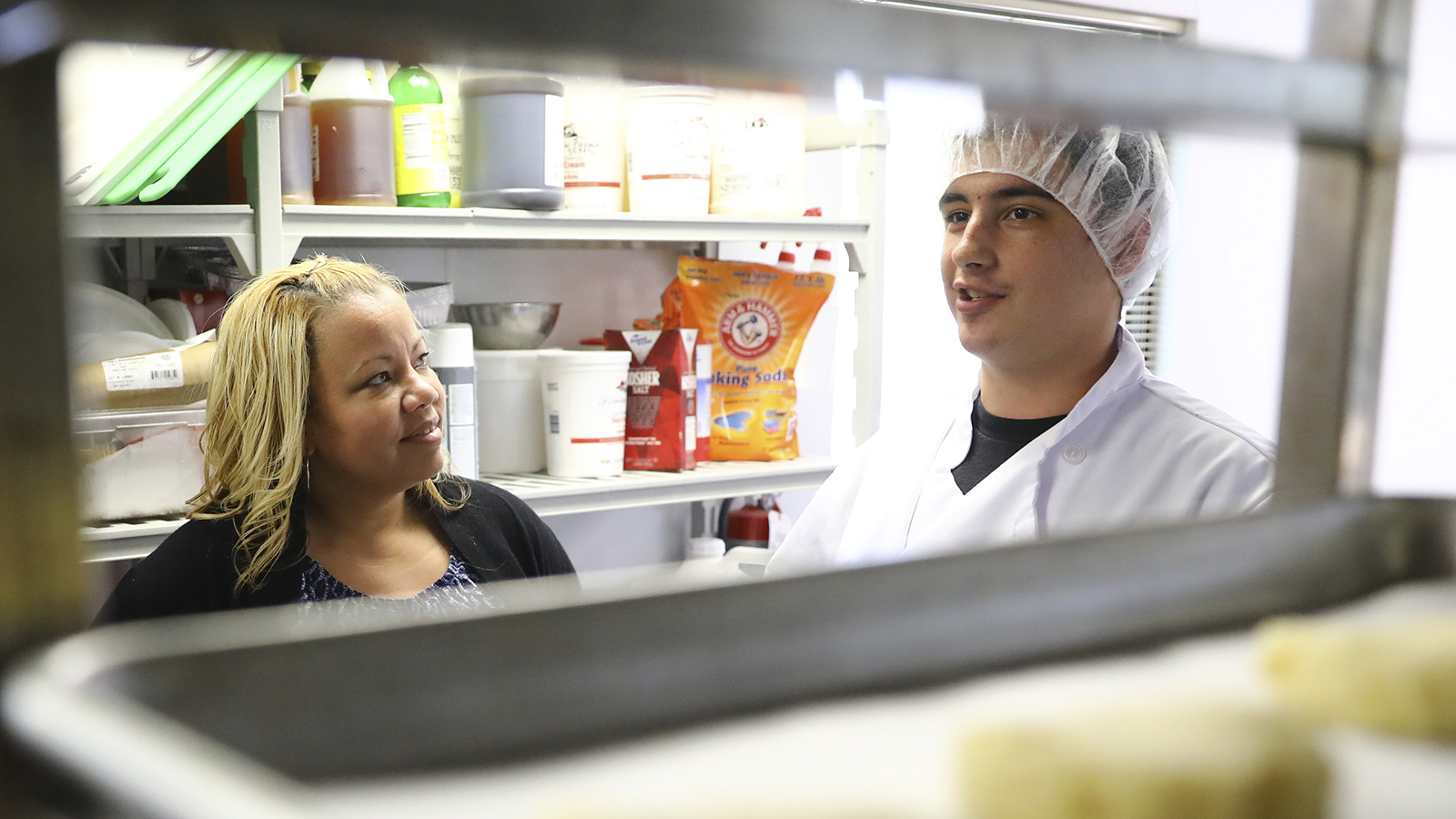
Carmella Glenn, Just Bakery program coordinator, and student Zachary Michael Wisniewski talk on June 5, 2018, in Madison. Just Bakery is a 12-week educational and vocational training program run by JustDane that works with people who are experiencing barriers to employment including past incarceration. Studies show people with criminal convictions face more difficulties getting jobs or qualifying for certain positions. (Credit: Coburn Dukehart / Wisconsin Watch)
“There are many agencies who work with and say they support individuals like me, but I can’t necessarily say they will actually hire us,” Ocejo said. “If you can’t genuinely hire or welcome individuals who have this lived experience and understand re-entry and the system, then just how are or were they able to provide services?”
Advocates: New strategies needed
Jerome Dillard, statewide director of Ex-Incarcerated People Organizing, said Wisconsin has been slow to embrace the types of reforms that could help people succeed after finishing their sentences.
“Actually, we are still under the tough-on-crime rhetoric, and I want to say that re-entry is a real struggle for many returning from our state prisons in Wisconsin,” he said.
But he is heartened that DOC Secretary Kevin A. Carr in January cut the 18 standard release conditions in half. That change has helped drive down “crimeless revocations” which send people back to prison for rules violations — not new crimes — and interrupts one’s ability to rebuild.
“I really feel that Secretary Carr has heard us and felt the pulse of the population and realized — and he said it publicly — that corrections can’t continue doing business the way it is,” Dillard said.

Jerome Dillard, director of Ex-Prisoners Organizing, speaks to a group gathered at the Wisconsin Capitol on March 13, 2018. Dillard says the state should spend more money helping the formerly incarcerated reintegrate into society. (Credit: Coburn Dukehart / Wisconsin Watch)
Couloute said policy changes — not just personal responsibility — will effectively cut incarceration.
“We shouldn’t just think about mass incarceration as an individual-level problem, it’s more of a societal issue,” he said.
Couloute said states should redirect spending from locking people up to helping them rejoin society.
“When we think about mass incarceration, we often think about it as an individual problem, as people making bad choices. But at its root, it’s people who are given bad options,” he said.
“What can we be doing with the money that we spend on incarcerating and arresting people that would prevent people from preventing crime in the first place?” Couloute asked. “We could be directing funds from our criminal justice system toward the educational system, toward mental health services, toward addiction services — that would then reduce our prison populations.”
Eventually, things started to fall into place for Ocejo. She found a full-time job with health benefits so she could afford her mental health medication. The first job wasn’t exactly what she was looking for, but it offered what she needed “to just be well.”
And a second chance was all she ever wanted.
“Maybe my story is unique,” Ocejo said. “I could’ve fallen through the cracks and stayed there and not be the person that I really am. Because really it’s just a series of mistakes — decisions I made that were mistakes — and to be never let out of those mistakes, it’s horrible.”
This story was produced as part of an investigative reporting class at the University of Wisconsin-Madison School of Journalism and Mass Communication under the direction of Dee J. Hall, Wisconsin Watch’s managing editor. The nonprofit Wisconsin Watch collaborates with WPR, PBS Wisconsin, other news media and the UW-Madison School of Journalism and Mass Communication. All works created, published, posted or disseminated by Wisconsin Watch do not necessarily reflect the views or opinions of UW-Madison or any of its affiliates.
 Passport
Passport




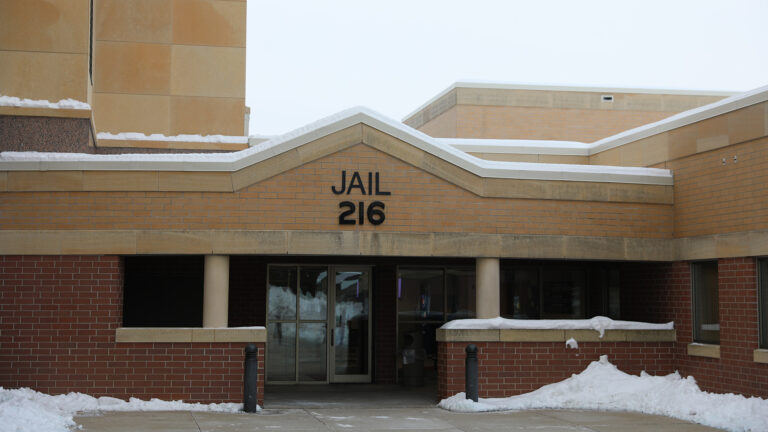
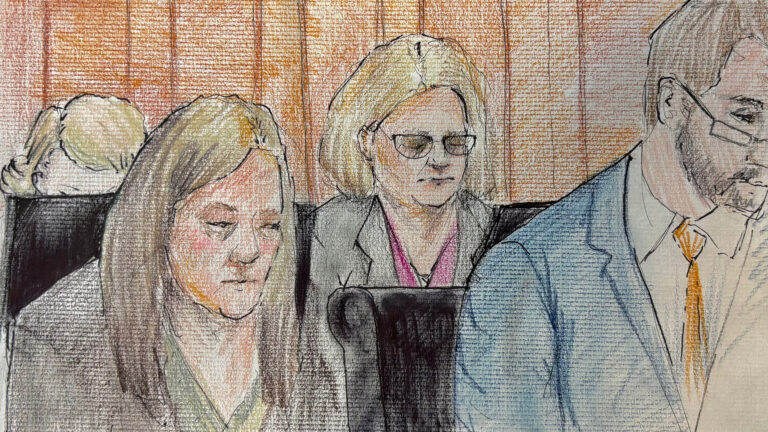
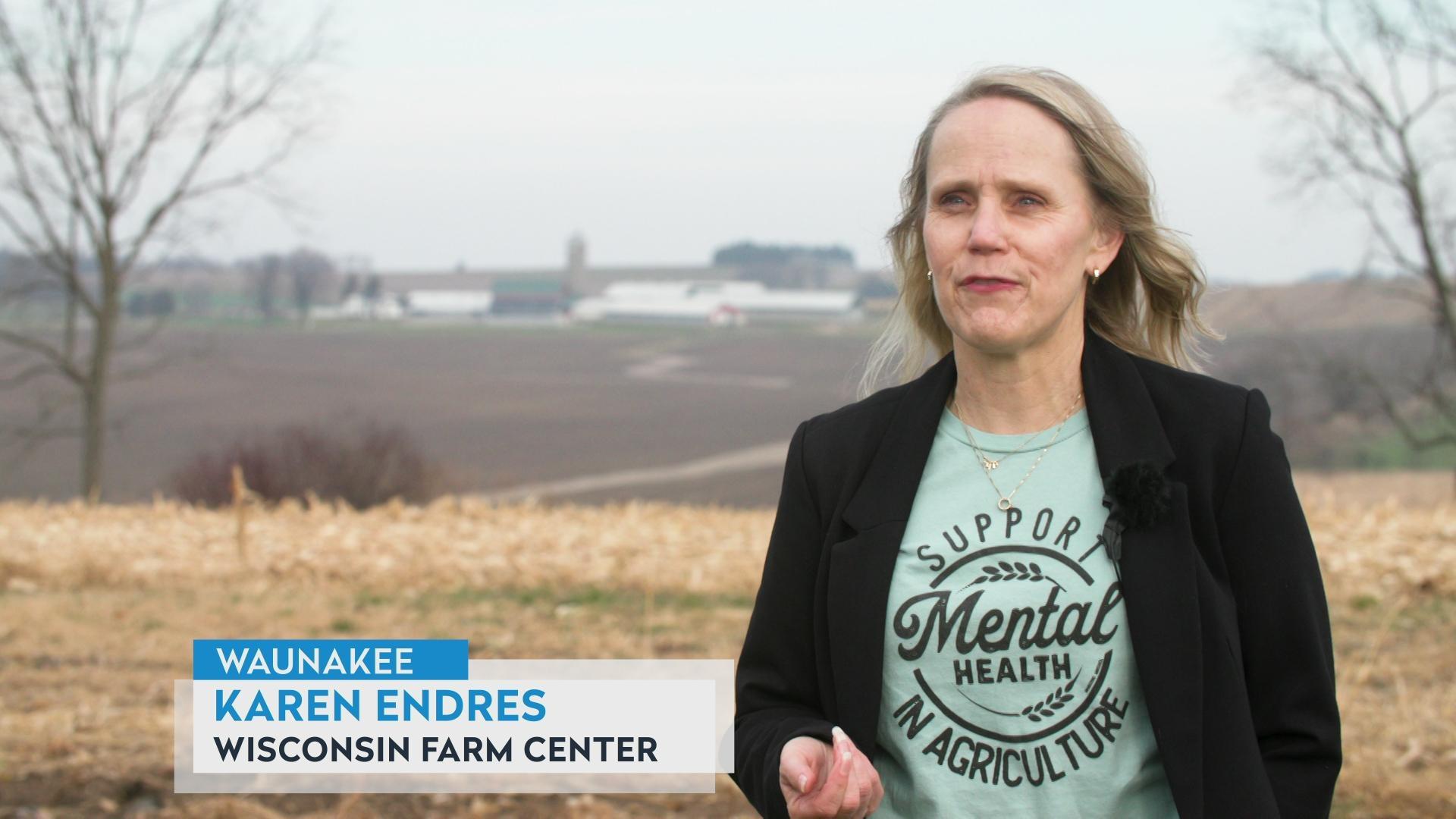

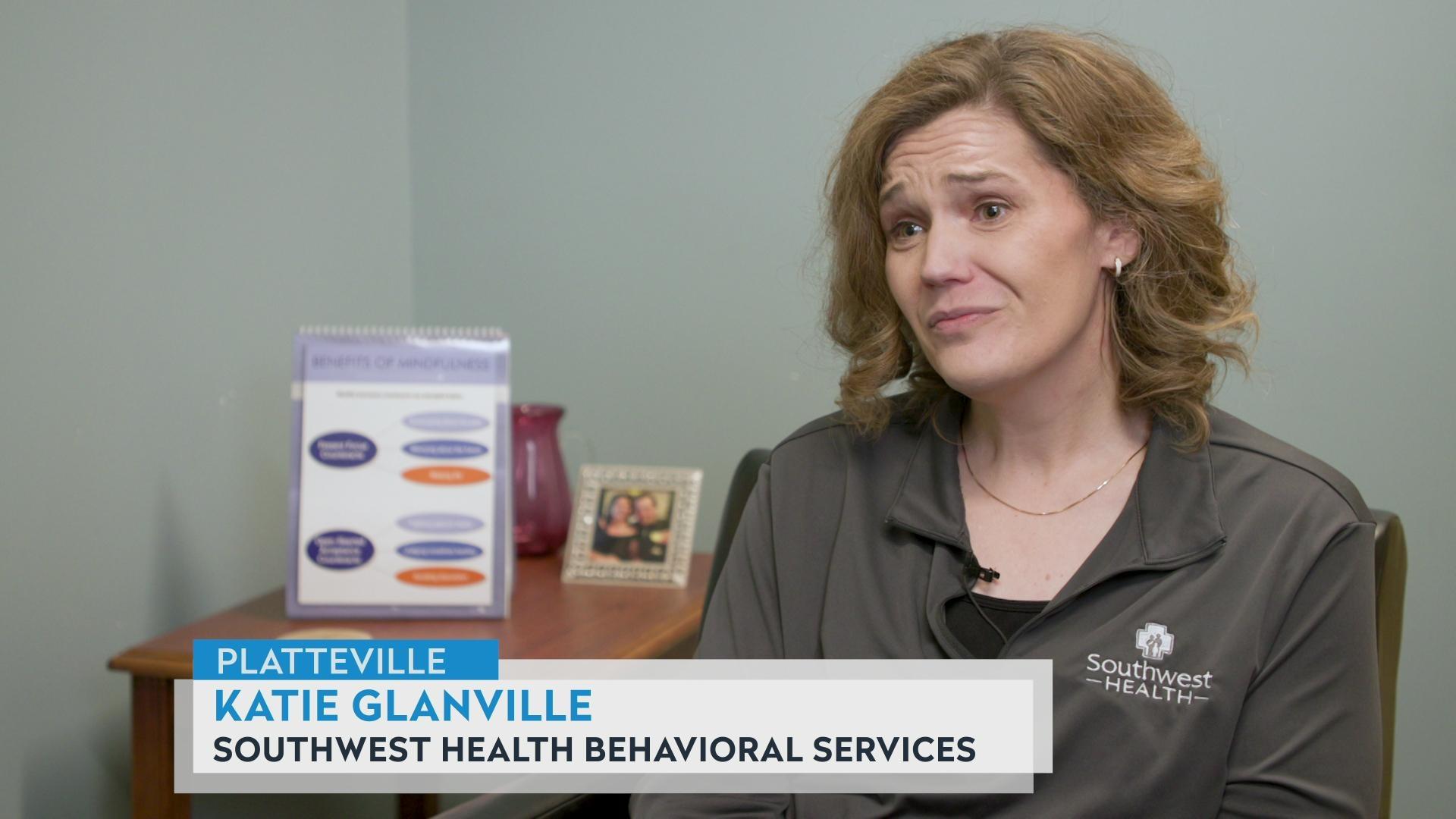


Follow Us